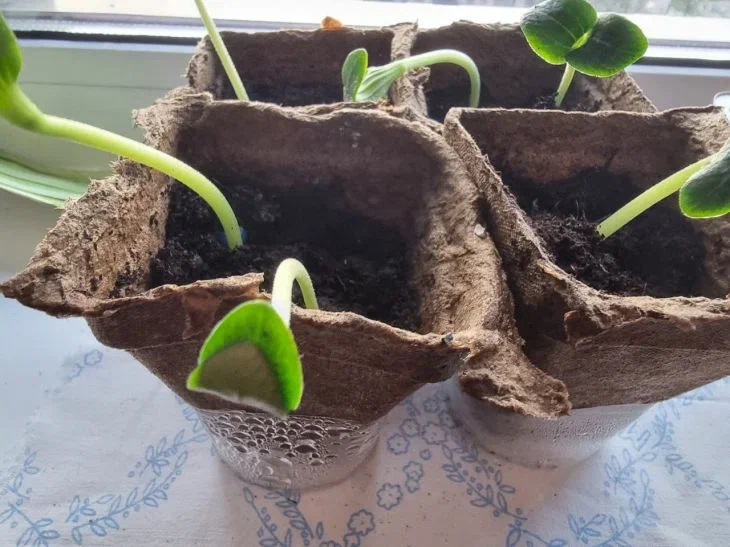The first leaf on the seedlings is always a joy. But to get strong plants by May, you need to avoid typical mistakes.
We will tell you about unacceptable sowing mistakes that can ruin your seedlings.
About sowing
For example, many people sow seeds too early, thinking that "the more, the better." As a result, the seedlings stretch out, become weak and do not take root well after planting.

The optimal time for tomatoes is 50–60 days before moving into the ground, for peppers – 65–70 days.
And don’t rush with cucumbers and zucchini: they are sown 25–30 days in advance, otherwise the overgrown roots will take a long time to adapt.
To calculate the timing, count 10-14 days from the date of the last frost in your region - this will be the ideal time for sowing.
About watering
Another mistake is improper watering. Sprouts should not be overwatered: excess moisture causes black leg.
Water the seedlings only when the top layer of soil dries out, and use room temperature water for this. A good technique is spraying from a spray bottle or bottom watering through a tray.
And to avoid the soil drying out, cover the containers with film until the shoots appear. But do not forget to air the "greenhouse" 2-3 times a day so that condensation does not accumulate.
If the sprouts have already appeared, remove the film and move the containers to a bright place.
About lighting
Lighting is key. If the seedlings are on a windowsill, rotate the containers regularly to prevent the stems from becoming crooked.
On cloudy days, turn on the phytolamp, placing it at a height of 20-30 cm above the plants. But do not leave the light on at night - the plants need rest.
The optimal regime is 14-16 hours of light per day. If there is no lamp, use foil: wrap it around the cardboard and place it behind the seedlings. The light will be reflected, and the stems will stop stretching.
And about fertilizers too
Fertilizers are also important, but don't overdo it. Fertilize for the first time 10 days after germination, using a weak solution of mullein (1:10) or a complex fertilizer with nitrogen.
The second feeding is done in 2 weeks, adding phosphorus and potassium for root development. For example, dissolve 1 tbsp of wood ash in 1 liter of water and water the seedlings.
And don’t get carried away with growth stimulants – sometimes they have the opposite effect, making the seedlings “pampered”.
If the leaves have become too dark and hard, this is a sign of overfeeding - take a break from feeding.
And about hardening
Hardening is a mandatory step. 2 weeks before planting, start taking the seedlings out onto the balcony, gradually increasing the time of “walks” from 15 minutes to a whole day.
But watch the temperature: if it is below +10°C at night, bring the plants indoors. In the last days before transplanting, leave the seedlings outside overnight, covering them with agrofibre.
This will help her adapt to temperature changes.
And the last piece of advice
Do not use garden soil for seedlings. It may contain pests and fungal spores.
It is better to buy ready-made soil or prepare a mixture yourself: peat, humus and sand in a ratio of 2:1:1. Steam it in the oven at 70 degrees Celsius for 30 minutes to kill pathogens. And then your sprouts will be strong and healthy!
